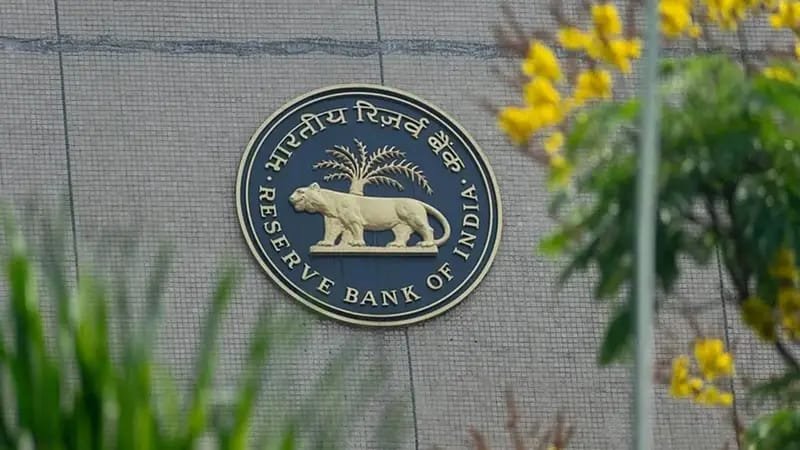As the Reserve Bank of India (RBI) prepares for its October 1 monetary policy decision, the same tired debate resurfaces: to cut or not to cut rates. The State Bank of India (SBI) has urged for a 25 basis points (bps) repo rate cut, calling it the “best possible option.” Yet, the RBI seems inclined once again toward its habitual status quo stance — a stance that increasingly looks less like prudence and more like paralysis. India’s economy is not operating in a vacuum. With the United States slapping 50% tariffs on Indian exports, geopolitical tensions rising, and global central banks like the U.S. Federal Reserve already cutting rates, the RBI’s wait-and-watch policy feels dangerously outdated. Yes, inflation has eased. Yes, growth hovers above 6.5%. But these headline numbers hide the fragile ground beneath. Exporters are gasping under tariff pressure, domestic demand remains patchy, and job creation is nowhere near what the government boasts. Yet the RBI, instead of offering relief, seems more concerned about being seen as “cautious” than being bold enough to support India’s economy when it most needs it.
State Bank of India Expects RBI to Announce 25 bps Rate Reduction this SBI report makes the obvious point: inflation is tame, GST rationalisation has softened prices of almost every essential item, and core inflation remains historically low. In plain words, the inflation monster is not what the RBI pretends it to be. Crisil’s Chief Economist Dharmakirti Joshi is right to say that the RBI has room to move — especially when global peers are loosening policy. If the U.S. Fed can cut rates despite its inflation struggles, what excuse does India have when its CPI is far below target? By refusing to act, the RBI risks deepening economic strain. A small, well-calibrated 25 bps cut is not reckless it is the minimum signal of confidence that India’s central bank can send to markets, households, and businesses right now.
Experts calling for status quo argue that growth is “stable” and inflation “under control.” But this is complacency disguised as caution. Stable for whom? For the corporate elite insulated from price shocks. For policymakers who do not feel the brunt of rising unemployment or shrinking exports? Ordinary Indians workers, small businesses, and exporters — are not living in the comfort of “status quo.” They are living with uncertainty, job losses, and squeezed margins. Every time the RBI hides behind its academic obsession with inflation targets, real people pay the price. The RBI cannot continue to function as a timid technocratic body content with caution while the ground beneath India’s economy shifts. Its job is not just to manage inflation on spreadsheets but to respond to real-world pressures that threaten livelihoods and growth. A 25-bps cut will not solve every problem, but it will signal that the RBI is alive to the crisis and not asleep at the wheel. Status quo, on the other hand, is nothing short of complicity — complicity in slowing growth, rising unemployment, and a government more focused on optics than solutions.
In the end, the debate over a mere 25 bps cut is not just a matter of fine-tuning monetary policy — it is a test of whether India’s institutions have the courage to respond to the crises of our time. The government is stumbling under the weight of its own economic mismanagement, relying on headline growth numbers and GST rationalisation to sell the illusion of stability, while exporters bleed under U.S. tariffs and ordinary citizens struggle with unemployment and stagnant wages. And the RBI, instead of stepping up as a proactive shield against these headwinds, appears trapped in its own bureaucratic caution. Let us be clear: status quo is not neutral it is a decision with consequences. It signals indifference to exporters crushed by tariffs, to small businesses suffocated by high borrowing costs, and to workers waiting for jobs that never come. It is the silence of an institution more worried about its reputation than its responsibility. By hesitating now, the RBI risks not only undermining growth but also eroding public faith in its ability to act when it truly matters.
A calibrated 25 bps cut would not be reckless it would be recognition of reality. It would send a message that India refuses to be passive in the face of global turbulence, that its central bank is capable of leading, not lagging. Anything less would only expose the hollowness of official claims about resilience and “strong fundamentals.” The choice before the RBI is stark: retreat into technocratic excuses or rise to the moment with decisive action. As State Bank of India Expects RBI to Announce 25 bps Rate Reduction It will remember whether the central bank stood with India’s people and economy when the storm gathered. This is the time for courage, not caution.

